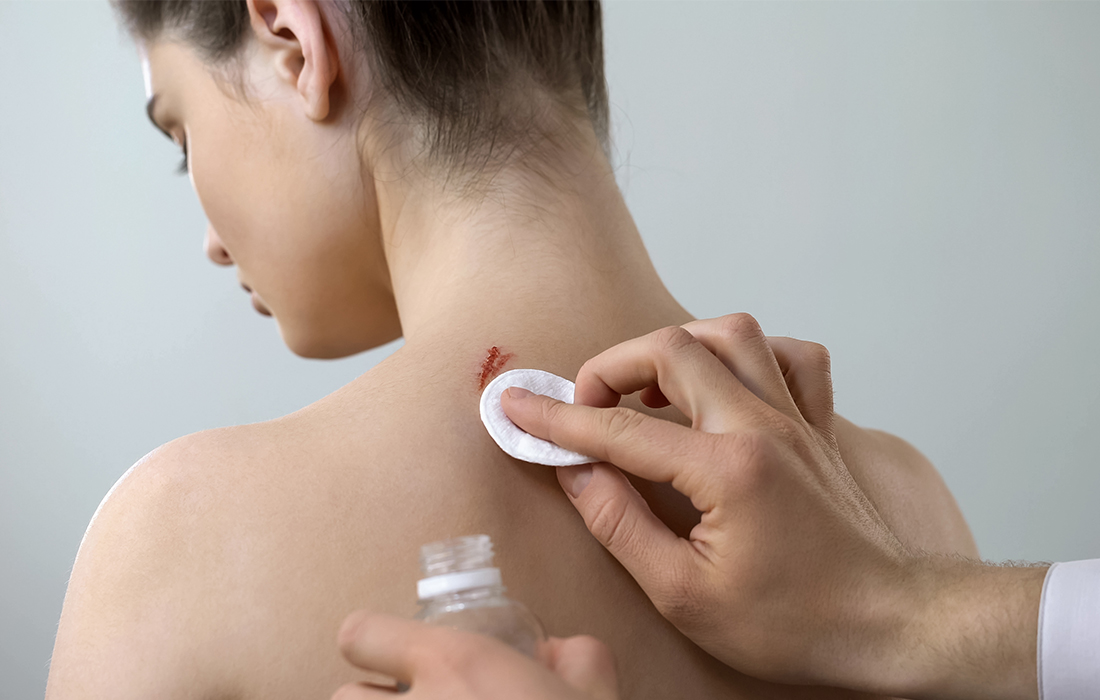What Are Wound Cleansers?

Certain types of wounds and burns are at higher risk of infection due to debris inside the wound or a simple dryness that inhibits healing. For these reasons, wound irrigation solutions exist to help rinse the wound site thoroughly and wash debris away. Foreign objects stuck inside a wound can lead to a buildup of bacteria and the biofilm mentioned above. Too much of this problem leads to wounds that feel uncomfortable and which smell bad. A wound irrigation solution requires no special preparation ahead of time—you can just apply it and rinse the wound out. These products can be combined with wound care spray and solutions, although some of those also provide irrigation to serve as a two-in-one solution.
Multiple Solutions in One
While some wound cleansers specialize in sterilization, debridement, or irrigation, many of the best wound care options combine these components into one effective spray or solution. To determine what product will be the most effective for your needs, you should read the label and identify the active ingredient. Solutions that are heavy with saline are excellent for irrigation purposes, as the saline will wash away debris without allowing bacteria to grow. Similarly, formulas that contain common antimicrobial agents are excellent for preventing infection and debriding surrounding tissue. There is no one magical solution that can handle every wound cleansing need, but paying attention to the core elements of infection prevention and wound irrigation can help you find the products that you most need.
Additional Products
Wound cleansers are not usually all-in-one solutions. That is, you need to make sure that you prepare the wound site properly first in order for the cleansing solution to do its work. In many cases, this involves preparing the area by killing bacteria with a preparatory wipe. This wipe, usually consisting of an alcohol solution, kills bacteria in the area and makes the wound spray or solution more effective. While the alcohol on these wipes can dry an area out and leave it feeling uncomfortable, the wound cleansing solution then provides moisture to balance this problem out. The end result is a wound that is as bacteria-free as possible and capable of allowing the body to heal more rapidly than if the wound had been left bandaged but untreated.
After using the wound cleanser, you need to add an appropriate dressing to make sure that the wound stays clean. This could include a simple bandage, but more often it involves the placement of an antimicrobial pad to make sure that no other debris or bacteria gets into the wound. When you use a wound dressing with antimicrobial properties, make sure that you remain aware of the active ingredients used in the pad area of the dressing. Although there are rarely any negative reactions between a wound dressing and a wound cleanser, doing a little bit of research can make sure that you maintain the best health possible while the wound heals. This research also helps you avoid rare but potentially serious side effects, such as allergic reactions.
Shopping Around
If you don't have a specific wound on hand that needs immediate attention, you can buy wound cleansers and supporting materials to be prepared for practically any injury. It helps to have a wound cleanser in spray form and another one in more direct solution form. If you wish to have more irrigation options, you should also have some saline on hand. When shopping around for these products, prioritize a store that can provide you with rapid delivery and reliably low prices. If you have questions about a specific wound cleanser, a search of online reviews can help.
Wound cleansers can help with punctures, abrasions, and deep cuts. They can also help soothe the pain caused by severe burns and help the tissue regrow. Using the knowledge of wound cleansers outlined above will help you stock up on products and know what you need for different kind of situations as they arise.

